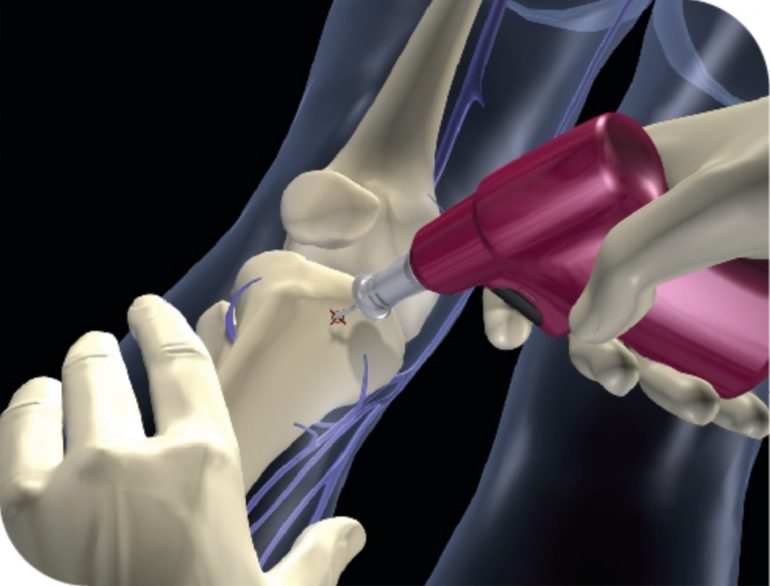
Intraosseous access, a life-saving technique in emergency shock management
Intraosseous access. Regardless of the cause, shock is characterised by tissue hypoperfusion, which leads to hypotension, changes in consciousness, a reduction in diuresis from oliguria to anuria. Management of such an emergency involves fluid restoration and administration of vasoactive drugs.
Intraosseous access: a life-saving technique
The management of shock requires the provision of at least one large-calibre venous access. However, in an emergency, there are situations where the patient does not have enough venous supply to place an agocannula in a very short time (less than 90 seconds).
This is very common during shock, and in these cases, a strategy that has proven to be a real lifesaver is intraosseous access.
All types of drugs and fluids including blood and plasma can be administered via the intraosseous route, and blood samples can be taken.
The doses of drugs that can be administered via intraosseous access are equivalent to those administered intravenously; however, a bolus of 5 ml of saline solution must be given after each drug infusion.
The kit consists of the needle, a connection line (e.g. Ez Connect) which must be filled with saline before the needle is placed, a syringe which is connected to the connection line, and the drill on which the needle is inserted.
Intraosseous access: correct technique reduces the risk of complications
The appropriate site must be easy to access and simple to monitor. In the literature, the most commonly used sites are the tibia, proximal and distal, the femur, humerus and radius.
After disinfecting the insertion site, the needle is inserted at a 90° angle to the bone; once the needle is inserted, the drill is disconnected, the needle is stabilised and the mandrel removed, and finally the connection line is connected, from which the infusion can be carried out.
The type of needle (15 mm, 25 mm or 45 mm) is related to the weight of the patient and the presence of soft tissue (the 45 mm needle is used for patients weighing > 40 kg).
Contraindications to intraosseous needle placement are:
- fractures and previous orthopaedic interventions in the vicinity of the access site
- intraosseous access within the previous 24 hours
- possible infection at the insertion site
- inability to locate the insertion site.
However, complications can occur, such as:
- needle dislocation
- obstruction of the needle after insertion
- fluid overflow
- site infection and bone fractures
To avoid these complications, the needle must be inserted aseptically, a check for any extravasation after insertion must be carried out, and the needle must be removed correctly after another peripheral or central venous access has been found, but never after 24 hours.
Read Also:
Tourniquet And Intraosseous Access: Massive Bleeding Management


